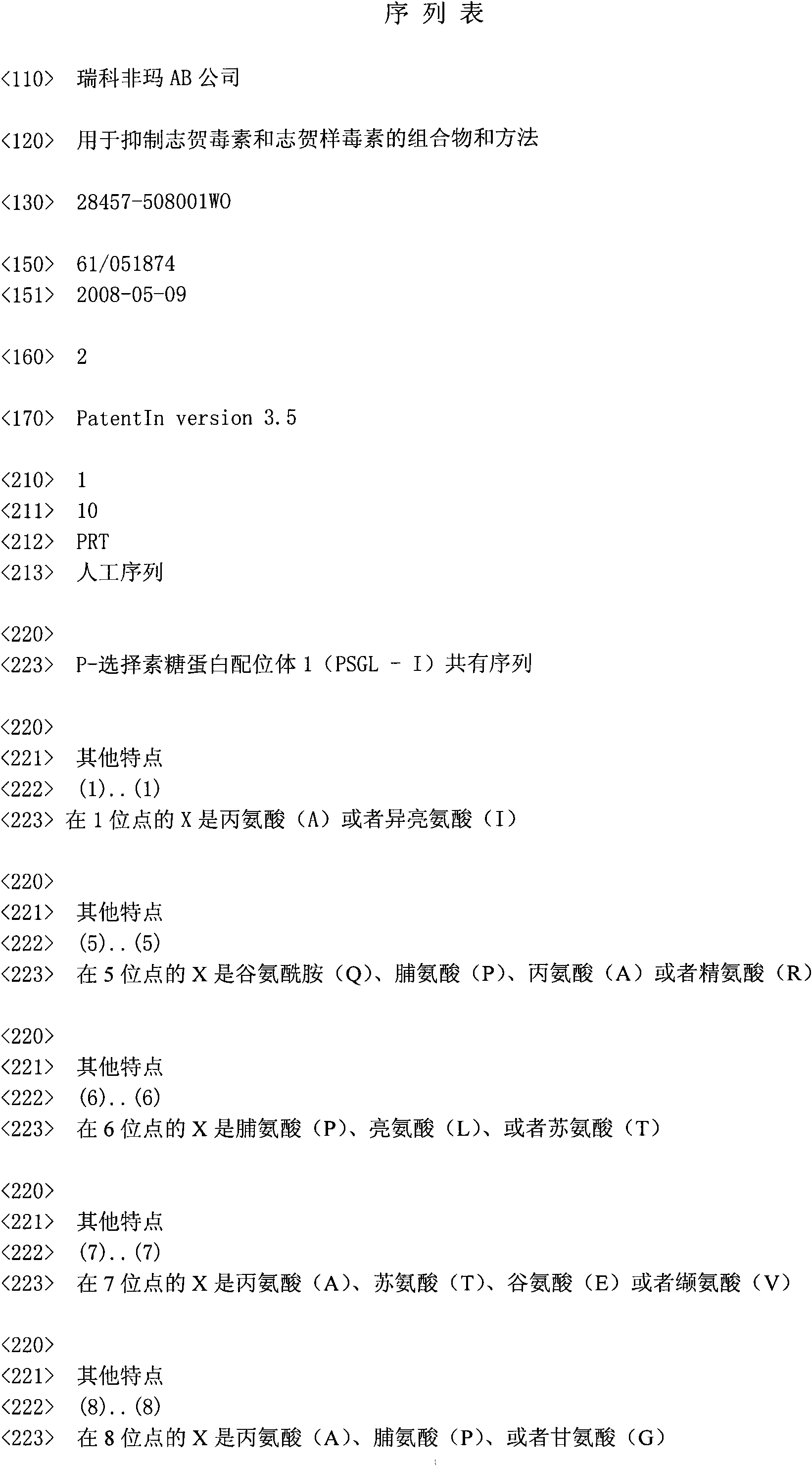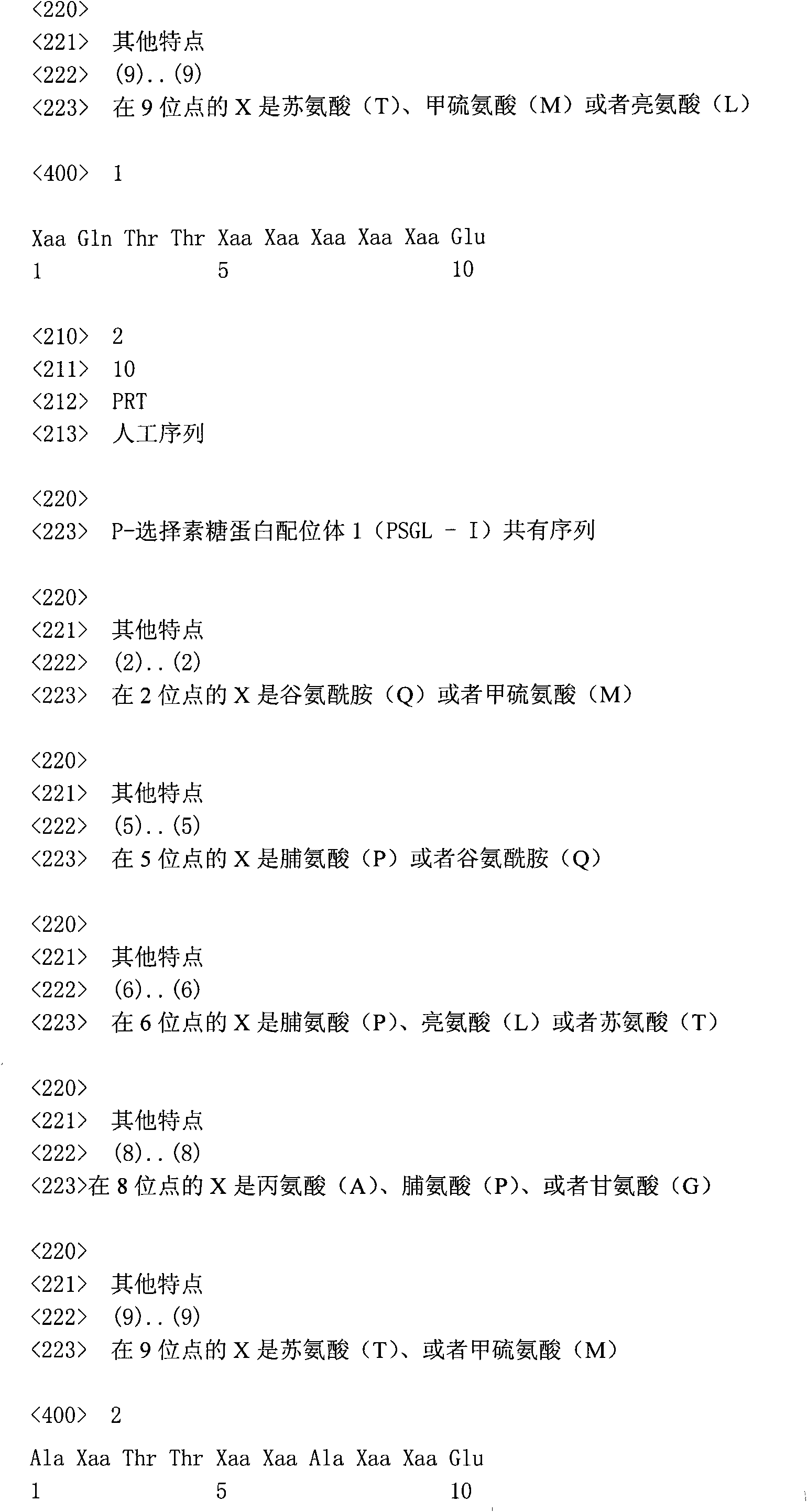Compositions and methods for inhibiting shiga toxin and shiga-like toxin
A technology for bacterial toxins and fusion polypeptides, applied in the field of compositions including fusion polypeptides, can solve problems such as differences in the interaction of cellular functions and host immune systems
- Summary
- Abstract
- Description
- Claims
- Application Information
AI Technical Summary
Problems solved by technology
Method used
Image
Examples
Embodiment 1
[0071] Example 1: Design of Stable Cell Lines Secreting P-selectin Glycoprotein Ligand-1 The immunoglobulin G Fc fusion protein, the P-selectin glycoprotein ligand carrying Galα4Galβ3GalNacα and / or Galα4Galβ4glcnac glycans
[0072] The P-selectin glycoprotein ligand 1 (PSGL-I) / mIgG2b expression plasmid is stably transfected into the cabbage armyworm insect cells, thereby producing the required antigenic determinant Galα4Galβ3GalNAcα, and the cabbage armyworm insect cells Has endogenous α1,4 galactosyltransferase activity.
[0073] Alternatively, the P-selectin glycoprotein ligand 1 (PSGL-I) / mIgG2b expression plasmid together with α1,4-galactosyltransferase and core 2β1,6-N-acetylglucosamine-mannosyltransferase Transfected into CHO-K1 cells to generate Galα4Galβ4GlcNAc (blood group P1 epitope) construct. Alternatively, the P-selectin glycoprotein ligand 1 (PSGL-I) / mIgG2b expression plasmid is combined with α-1,4-galactosyltransferase, one or more than one peptide GaINAcTs...
Embodiment 2
[0084] Embodiment 2: Inhibition of bacterial toxin infection in vitro
[0085] Shiga toxin and / or shiga-like toxin and endothelial cells sensitive to the cytopathic effects of Shiga toxin and / or shiga-like toxin are For evaluating the inhibitory ability of the above fusion proteins with respect to the prevention of toxin-cell surface binding and aberrant protein synthesis in sensitive host cells.
Embodiment 3
[0086] Embodiment 3: route of administration
[0087] Recombinant P-selectin glycoprotein ligand 1 (PSGL-I) / mIgG2b carrying Galα4Galβ3GalNacα and / or Galα4Galβ4GlcNac glycans (ie, STI fusion protein) was administered systemically to prevent hemolytic uremia. The STI fusion protein is administered renally to prevent dissemination from the site of infection.
PUM
 Login to View More
Login to View More Abstract
Description
Claims
Application Information
 Login to View More
Login to View More - R&D
- Intellectual Property
- Life Sciences
- Materials
- Tech Scout
- Unparalleled Data Quality
- Higher Quality Content
- 60% Fewer Hallucinations
Browse by: Latest US Patents, China's latest patents, Technical Efficacy Thesaurus, Application Domain, Technology Topic, Popular Technical Reports.
© 2025 PatSnap. All rights reserved.Legal|Privacy policy|Modern Slavery Act Transparency Statement|Sitemap|About US| Contact US: help@patsnap.com


